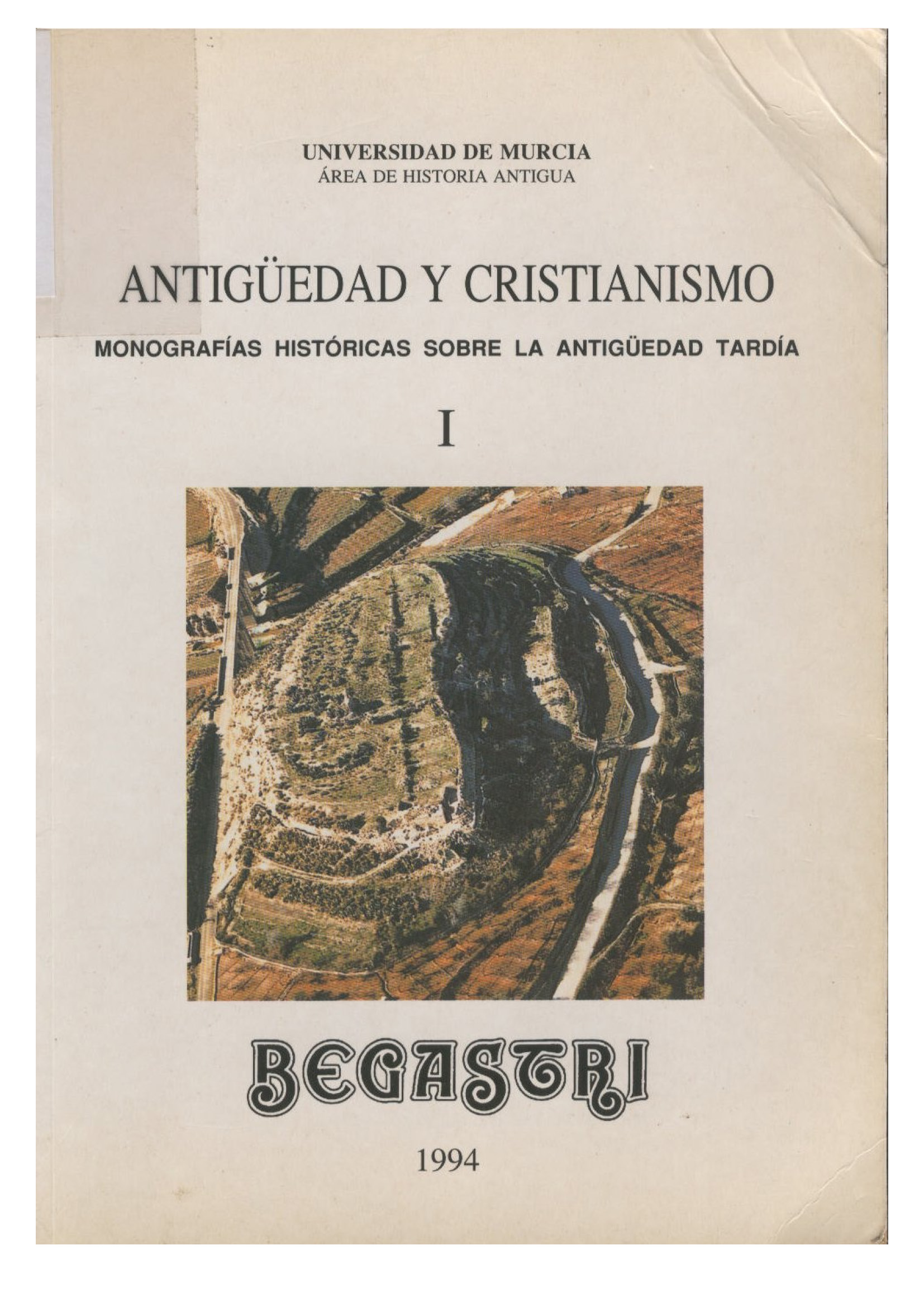Datos preliminares para el estudio de las cerámicas tardías de Begastri. Consideraciones generales
Abstract
Recogemos en este apartado un lote cerámico próximo a los cuarenta ejemplares, que tienen como características comunes, sus superficies cuidadas (bruñidas, espatuladas o barnizadas), una arcilla generalmente de buena factura, depurada y homogénea de coloración que varía entre el naranja pálido y el gris oscuro, y una cronología entre los siglos IV-VI d. C. La naturaleza misma de este trabajo determina sus límites, y por ello, que tan sólo presentamos de forma somera unas consideraciones generales sobre el tema1 describiendo y analizando las piezas más características. Se trata de vajillas de mesa que conviven en gran medida con las producciones más tardías de las sigillatas claras, especialmente con el tipo de clara D, familia con la que presentan similitudes morfológicas y tipológicas. Del conjunto total de cerámicas estudiadas, cinco son los grupos que se pueden individualizar, distribuidos según sus características tipológicas, técnicas y morfológicas.
Downloads
-
Abstract199
-
PDF (Español (España))144
1. The authors non-exclusively assign the exploitation rights (reproduction, distribution, communication and transformation) to the magazine.
2. The works published in this magazine are subject to the Attribution-ShareAlike 4.0 International license (CC By SA 4.0). Therefore, they can be copied, used, disseminated, transmitted and publicly displayed, provided that:
i) the authorship and the original source of its publication (journal, editorial and URL of the work) are cited, thus allowing its recognition.
ii) it is allowed to remix, transform or create from the material while maintaining the same license as the original.
Note: Articles prior to 2022 incorrectly display the CC by SA license in the abstract page. They are under a CC by NC ND license as embedded in the article pdfs. Articles published in 2022 and after are under the CC by SA license.

3. Self-archiving conditions. Authors are allowed and encouraged to electronically disseminate the pre-print (version before being evaluated) and/or post-print (version evaluated and accepted for publication) versions of their works before publication, as it favors their publication. Earlier circulation and diffusion and with it a possible increase in its citation and reach among the academic community. Color RoMEO: verde.
























